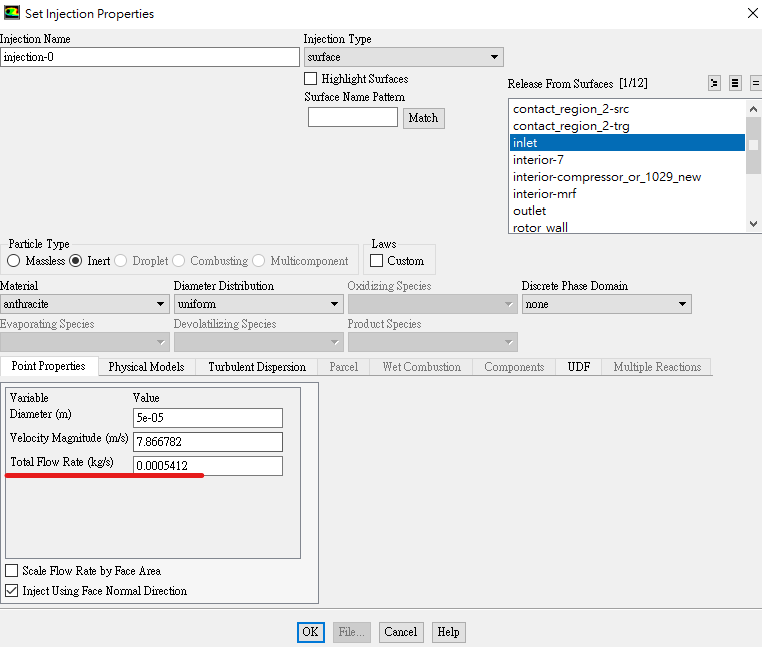-
-
November 1, 2024 at 7:15 am
luna6362
SubscriberHello everyone,
I am simulating the oil track within a model. I have set different mass flow rates, but the DPM track results appear to be the same.
What is the purpose of setting the total mass flow rate in the DPM model?
If I want to observe different results based on injecting various mass flow rates of the oil, what steps should I take?
Thank you so much!
-
November 1, 2024 at 10:49 am
Rob
Forum ModeratorWhat results are you expecting to change? Are you running DPM with interation to continuous phase?
-
November 3, 2024 at 7:50 am
luna6362
SubscriberI expect that different DPM mass flow rates will result in different flow fields.
In reality, if I change the mass flow rate of the injected fluid, should the flow field be different?
I ran a steady DPM in a steady continuous phase.
If I change the DPM model to a transient type, will the results be more like what I imagine?
If so,what is the purpose of setting the total mass flow rate in the steady DPM model?
Thank you!!
-
-
November 4, 2024 at 9:42 am
Rob
Forum ModeratorThe inlet (flow) mass flow is not linked to the DPM (injected) flow directly. If the DPM model isn't coupled the particles have no effect on the carrier phase flow.
So, if you increase the injection mass but don't have coupling then there will be no effect on the flowfield. As we track parcels you'll also not see any additional tracks.
-
November 4, 2024 at 10:17 am
luna6362
SubscriberOkay. I understand that if I don’t choose to couple the flow and DPM, particle won’t have any effect on the flow field.
(Since the particles won’t affect the flow field, I may decide not to couple them.)
However, if I want to see how changing the injected DPM mass flow affects the DPM tracks, what should I do?
Or is it because of the nature of the DPM model (particle content) that I can’t perform this simulation?
Thank you!😀
-
-
November 4, 2024 at 11:22 am
Rob
Forum ModeratorCorrect re the coupling.
If you want to see a change with more DPM mass you need to couple (interact) the particles with the flow. That way if there is sufficient particle momentum you'll see a change in the flow field and that will intern show a change in the particle trajectories. But... You may also find the particles slow/accelerate to the flow speed fairly quickly so the differences may be very small, potentially to the point of not being noticeable.
-
November 4, 2024 at 11:32 am
luna6362
SubscriberThank you so much!
I may try coupling the particles with the flow to see the changes (or maybe there will be no changes, haha).
Thank you again for always helping to resolve everyone's doubts in the forum.👍
-
-
- You must be logged in to reply to this topic.


- air flow in and out of computer case
- Varying Bond model parameters to mimic soil particle cohesion/stiction
- Eroded Mass due to Erosion of Soil Particles by Fluids
- I am doing a corona simulation. But particles are not spreading.
- Centrifugal Fan Analysis for Determination of Characteristic Curve
- Issue to compile a UDF in ANSYS Fluent
- Guidance needed for Conjugate Heat Transfer Analysis for a 3s3p Li-ion Battery
- JACOBI Convergence Issue in ANSYS AQWA
- affinity not set
- Resuming SAG Mill Simulation with New Particle Batch in Rocky

-
4362
-
1494
-
1375
-
1198
-
1021

© 2025 Copyright ANSYS, Inc. All rights reserved.








